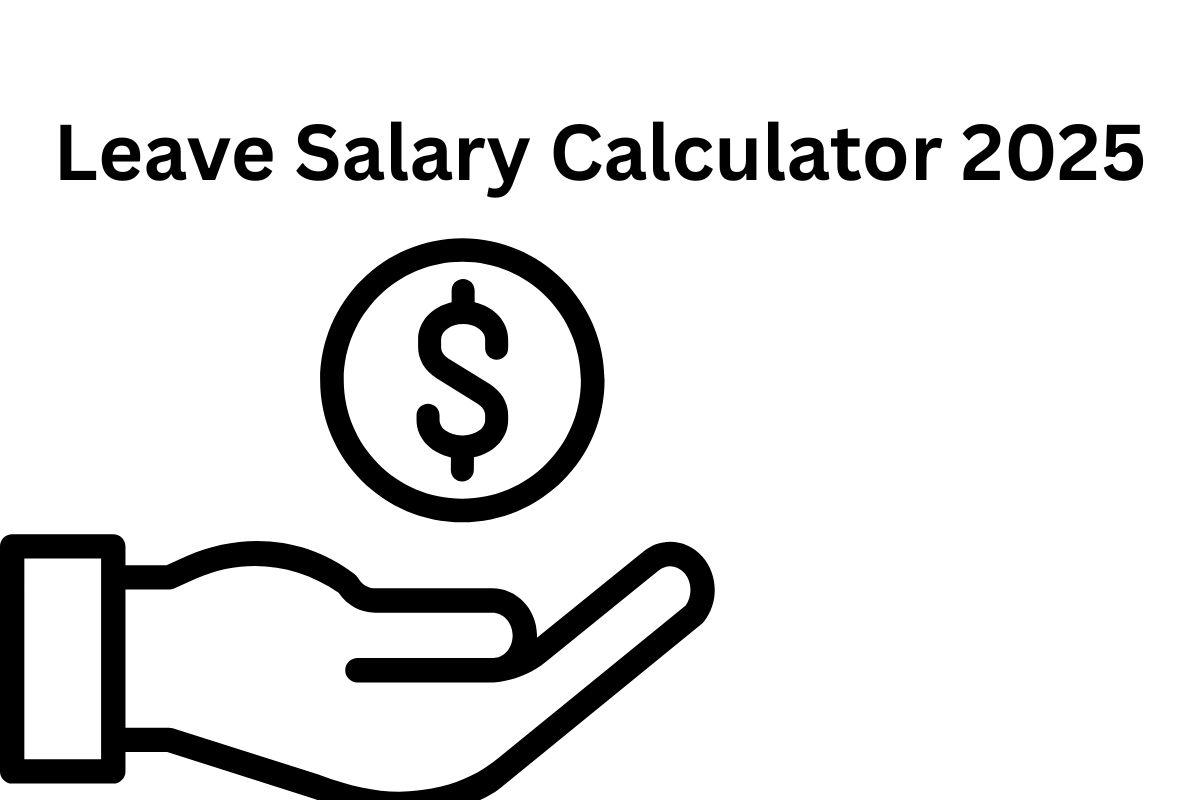Hello Readers, Navigating the world of leave encashment can feel overwhelming, especially when you’re trying to figure out how much you’ll earn from your unused leave days in 2025. Whether you’re planning to resign, retire, or just curious about your entitlements, a leave salary calculator is your best friend. In this article, I’ll walk you through what leave encashment is, how to calculate it, and why using a calculator makes the process stress-free. Let’s dive in!
What is Leave Encashment?
Leave encashment is the payment you receive for the paid leave days you didn’t use during your employment. Most companies allow employees to carry forward unused leaves, and when you leave the organization—whether through resignation, retirement, or termination—you can convert these leaves into cash. This payment is often part of your final settlement and can give your finances a nice boost.
The amount you receive depends on your basic salary, the number of unused leave days, and your company’s leave policy. Plus, tax rules can affect how much of this amount you get to keep. A leave salary calculator simplifies this process by doing the math for you and ensuring accuracy.
Why Use a Leave Salary Calculator in 2025?
Manually calculating leave encashment can be tricky. You might make errors with formulas or forget to account for tax exemptions. A leave salary calculator takes away the guesswork. Here’s why it’s a game-changer:
-
Saves Time: No need to spend hours crunching numbers.
-
Reduces Errors: Automated calculations ensure accuracy.
-
Tax Clarity: It helps you understand the taxable and exempt portions.
-
User-Friendly: Just input your salary and leave balance, and you’re done!
With 2025 bringing updated tax laws and company policies, using a reliable calculator ensures you stay on top of the latest rules.
How Does a Leave Salary Calculator Work?
A leave salary calculator is an online tool that computes the amount you’re entitled to for unused leaves. It considers your basic salary, dearness allowance (if applicable), and the number of unused leave days. The process is straightforward, and most calculators follow these steps:
-
Select Your Employee Type: Are you a government or non-government employee? This affects tax exemptions.
-
Choose Encashment Timing: Are you encashing leaves during employment, at retirement, or upon resignation?
-
Enter Service Duration: Input your total years of service (rounded to the nearest whole year).
-
Input Salary Details: Provide your basic salary and dearness allowance (if included in your package).
-
Add Unused Leave Days: Enter the number of earned leaves you haven’t used.
-
Include Annual Leave Entitlement: Specify how many leaves you were entitled to per year.
-
Calculate: The tool will show your total encashment amount and the taxable portion.
This simple process ensures you get an accurate estimate in seconds.
Leave Encashment Formula
If you’re curious about the math behind the calculator, here’s the standard formula used for leave encashment:
Leave Encashment = (Basic Salary + Dearness Allowance) ÷ 30 × Number of Unused Leave Days
For example, if your monthly basic salary is $2,000, your dearness allowance is $500, and you have 20 unused leave days, the calculation would be:
- ($2,000 + $500) ÷ 30 × 20 = $1,666.67
This is the amount you’d receive before taxes. Note that some companies may use a different divisor (like 26 for working days), so always check your employer’s policy.
Tax Rules for Leave Encashment in 2025
Taxation on leave encashment varies based on your employment type and when you encash your leaves. Here’s a quick breakdown:
|
Employee Type |
Tax Rule |
|---|---|
|
Government Employees |
Fully exempt from tax if encashed at retirement or resignation. |
|
Non-Government Employees |
Partially exempt up to a maximum of $25,000 (as of 2025). The rest is taxable. |
|
During Employment |
Fully taxable, regardless of employee type. |
|
Legal Heirs of Deceased |
May be exempt under specific conditions. |
For non-government employees, the exempt amount is the least of:
-
The actual leave encashment received.
-
10 months’ average salary (basic + dearness allowance).
-
$25,000 (the maximum limit in 2025).
-
Cash equivalent of leave days (up to 300 days).
Using a leave salary calculator helps you see how much of your encashment is taxable, so you can plan your finances better.
Example Calculation for 2025
Let’s make this real with an example. Meet Sarah, a non-government employee retiring in 2025 after 15 years of service. She earns a basic salary of $3,000 per month and has 200 unused leave days. Her company allows 30 leave days per year. Here’s how the calculator works for her:
-
Step 1: Sarah selects “Non-Government Employee” and “At Retirement.”
-
Step 2: She enters 15 years of service.
-
Step 3: She inputs her basic salary ($3,000) and no dearness allowance.
-
Step 4: She adds 200 unused leave days and 30 leaves per year.
-
Step 5: The calculator uses the formula: ($3,000 ÷ 30) × 200 = $20,000.
-
Step 6: It checks tax exemptions. The exempt amount is the least of:
-
$20,000 (actual encashment).
-
$30,000 (10 months’ salary).
-
$25,000 (maximum limit).
-
$20,000 (cash equivalent for 200 days).
-
-
Result: Sarah’s entire $20,000 is exempt from tax since it’s below the $25,000 limit.
This example shows how a calculator simplifies the process and clarifies tax implications.
Tips for Using a Leave Salary Calculator in 2025
To get the most out of a leave salary calculator, keep these tips in mind:
-
Check Company Policy: Confirm your employer’s leave encashment rules, as they may differ.
-
Update Salary Details: Use your latest salary slip for accurate inputs.
-
Understand Tax Laws: Stay informed about 2025 tax exemptions to maximize your benefits.
-
Consult HR: If unsure about leave balances or policies, ask your HR team.
-
Use Reliable Tools: Choose trusted calculators like those from ClearTax or TaxSpanner for accurate results.
Benefits of Planning Leave Encashment
Planning your leave encashment can help you make smarter financial decisions. Whether you’re saving for a big purchase, paying off debt, or preparing for retirement, knowing your encashment amount gives you clarity. Plus, understanding the tax implications ensures you don’t lose a chunk of your payout to taxes. In 2025, with rising costs, every dollar counts, and a leave salary calculator helps you make the most of your unused leaves.
Final Thoughts
A leave salary calculator is a must-have tool for anyone looking to cash in on unused leave days in 2025. It’s quick, accurate, and takes the stress out of complex calculations. By understanding how it works, the formula behind it, and the tax rules, you can confidently plan your finances. Whether you’re a government employee enjoying full tax exemptions or a private-sector worker navigating partial exemptions, this tool ensures you know exactly what to expect.
So, don’t let those unused leave days go to waste. Try a leave salary calculator today, and take control of your financial future!




